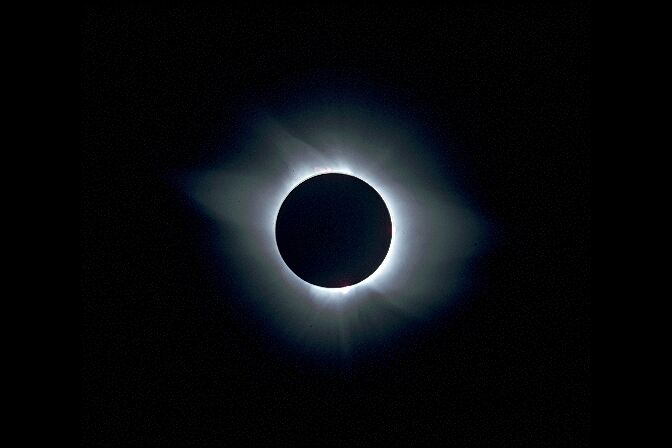This Tuesday, July 2nd, observers in Chile, Argentina and Uruguay will be witness to one of nature’s most awesome spectacles, a Total Eclipse of the Sun.
A total eclipse of the sun occurs when the moon, at “New” Phase, perfectly covers the disk of the sun. Since the moon is 400x smaller than the sun, yet 400x distant, it’s a perfect geometric cover or “eclipse”. Eclipses occur according to their Saros cycle, an 18 year cycle in which three of the Moon-Earth cycles repeat almost perfectly, the end effect of which is to create a near duplicate eclipse in this long period of time.
The interplay between the various cycles of the Moon orbiting the Earth, the Earth orbiting the Sun, and the Moon’s gradually changing orbital inclination lead to patterns that repeat over short, medium and long periods of time as these three bodies align. One of the overall epicycles of these orbits is called the Saros Cycle.
When the sky gets gradually darker and more ghostly, as the moon covers that last diminishing sliver of sun, when totality immerses us in the alien light of the solar corona, all this science is forgotten and we are witness to nature in all her raw power, her majesty and splendor, the memory of which will last a lifetime.
For those fortunate to be within the 100-km-wide path of totality, they will be immersed inside the umbra, the deep center of the moon’s shadow and will witness totality; for those outside that very narrow band, in the penumbra, they will witness only the partial phases of the eclipse.
Brilliantly clear skies are predicted for Tuesday, 2 July for observers in Chile, Argentina and Uruguay. Totality will make landfall at the western coast of Chile, close to the nation’s capital, Santiago, with the center line crossing the city of La Serena almost directly.
All times indicated below are in CLT (Chilean Standard Time). Conversion to UTC: CLT + 4 or the same for EDT: CLT = UTC – 4. Concise data for the point of landfall at La Serena can be found as follows.
That the path of totality passes very close to more than a half-dozen world-class observatories in the mountains near La Serena testifies to its excellent and largely cloud-free skies. One of those observatories is the European Southern Observatory’s La Silla Observatory.

This artist’s impression shows how the total solar eclipse of 2 July 2019 will appear from ESO’s La Silla Observatory in Chile. The sun will be quite low in the western sky and, if the skies are clear, several planets and bright stars should be also visible. Image courtesy M. Druckmüller, P. Aniol, K. Delcourte, P. Horálek, L. Calçada/ESO
The European Southern Observatory and the observatory at La Silla are hosting a world-class event on the day of the eclipse with all the details available here. To get a better sense of the event’s significance and how fortunate we are that major astronomical assets lie along the path of totality, we reproduce a paragraph from the European Physical Society’s press release here
ESO and the Cerro Tololo Inter-American Observatory, Gemini Observatory, SOAR Observatory, Large Synoptic Survey Telescope, Las Campanas Observatory, and Giant Magellan Telescope Project are working closely with the Regional Governments of Coquimbo and Atacama, as well as with local institutions. Together, they aim to bring science and astronomy closer to the people of Chile and the wider public during the 2019 eclipse, and to welcome the large number of visitors expected.
Imagination is more important than knowledge
![]()
An index of all articles in this blog can be found here.





